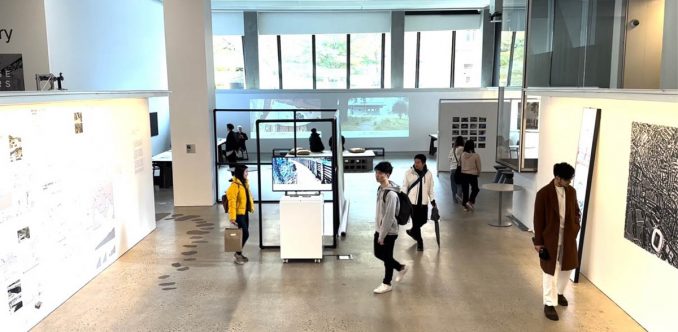
Review by Terren Shi, a recent graduate of landscape architecture.
Landscape Architects as Change Makers, a multimedia exhibition curated by Heike Rahmann and Jillian Walliss in collaboration with Saran Kim, delves into the tactics and strategies employed by Japanese and Australian landscape architects in creating innovative solutions that address the cultural and ecological specificity to their respective regions.
The exhibition showcases 8 projects by award-winning designers, accompanied by an additional 12 videos featuring Japanese and Australian designer exploring landscape architecture as a practice. The exhibition is held at the Dulux Gallery in the Melbourne School of Design building from 1st May to 1st June 2023, as part of Melbourne Design Week 2023.
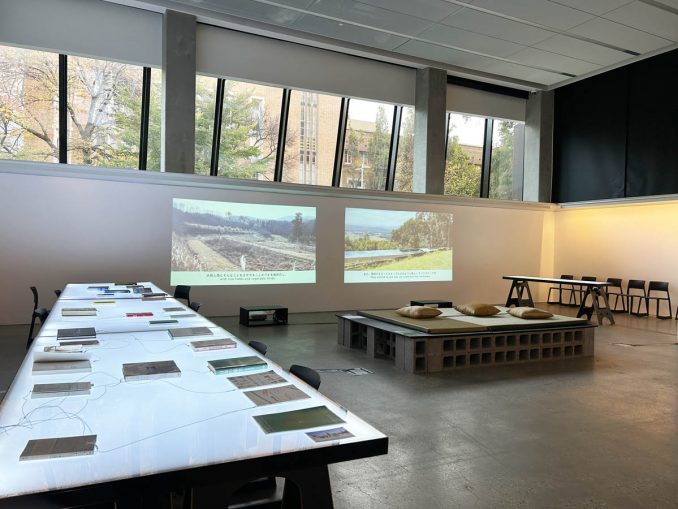
The exhibition offers a diverse range of mediums, including videos, hand sketches, photographs, and printed drawings, providing multiple methods for audience interaction. Upon entering the gallery, visitors will encounter a carefully curated collection of Japanese and Australian landscape architecture publications displayed on a long table for viewing. The central area of the exhibition is adorned with three tatami mats on a raised platform, which serves as a means to connect to Japanese culture. Visitors are encouraged to contemplate and interact with the space, utilising the tatamis while watching two projected films situated opposite to them. Continuing through the rectangular gallery space, three sets of projects categorised under the theme of urban garden, countryside resort, and mountain trial are displayed side by side, creating a comparative showcase. The exhibition maintains a comparative quality throughout, as each theme features projects from both Japanese and Australian landscape architects, resulting in distinct differences in design thinking.
The curators reveal, after securing additional funding, they were able to include 4 Australian projects in the exhibition. Their travels in Japan provided them with a fresh perspective on Australia, enabling Walliss and Rahmann to carefully select the urban public garden in Australia (which is rare in the country), and the regional Australian project. These comparisons demonstrate the difference between public and private spaces in Australia and Japan.
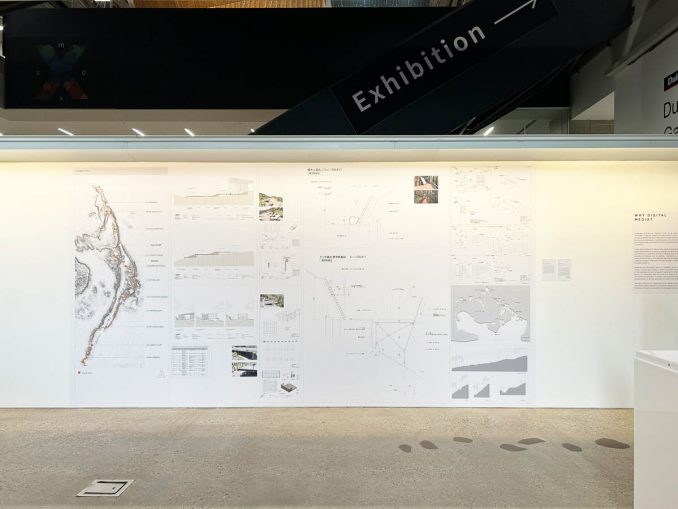
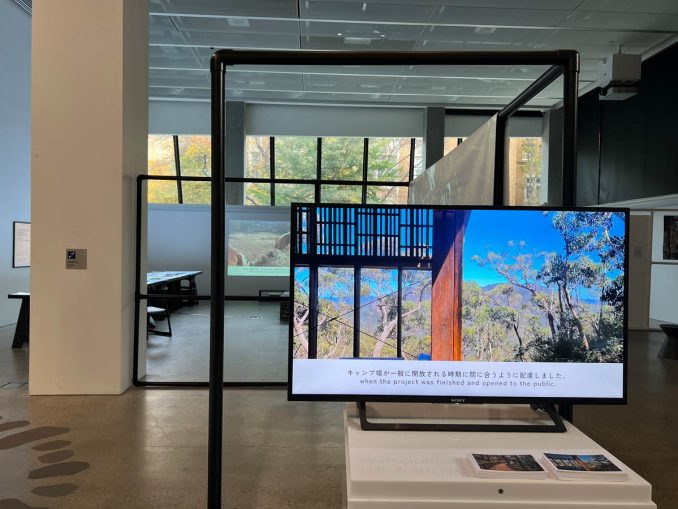
A highlight of the exhibition is the integration of digital media, which this multimedia exhibition provides plural ways of audience engagement. As the main approach of documentation, digital media gives audiences an immersive and captivating experience. Traditionally, landscape architecture has been communicated through physical publications and websites that features texts and images. However, these static mediums often fall short in conveying the dynamic nature of design changes. By incorporating digital media, the exhibition bridges this gap by allowing audience to experience the projects in a more immersive manner. Working with readily available technologies like smartphone and gimble, all films, including the site footages and interviews, are filmed, and edited by Jillian Walliss, Heike Rahmann, and Saran Kim.
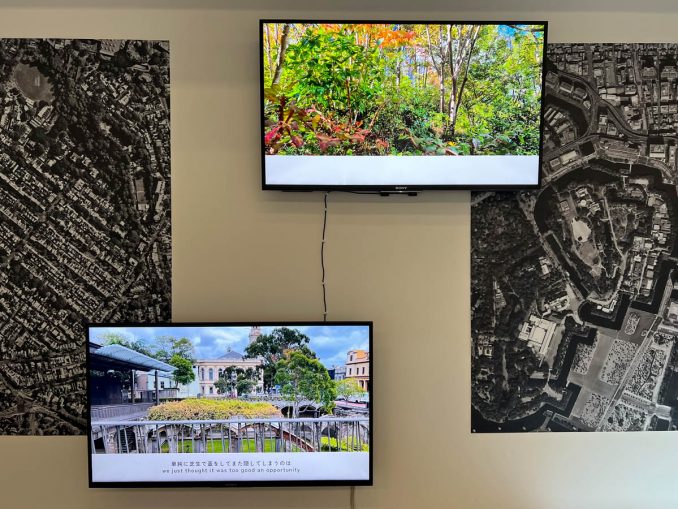
In landscape architecture, the concept of dynamism is crucial. Projects undergone continuous growth, transition, and cyclical changes from the moment of their completion. The true essence of landscape architecture cannot be fully captured by documenting a singular moment in its transition. For instance, the maturation process of a project’s planting might span several years, and capturing only a snapshot fails to communicate the holistic role of landscape architecture.
In the exhibition, Rahmann and Walliss directly address the designer’s achievements as change makers in accompanying text. They provide specific examples, such as the Nihombashi Garden in Tokyo, where “landscape architects incorporate a contemporary stroll garden on the rooftop of a century-old department store.” By combining direct textual information with digital media, the audience gains a deeper understanding of how landscape architects address and enhance our environment at the right moments in time, as well as how they extend landscape architecture design practice.
This approach allows visitors to grasp the transformative nature of landscape architecture and appreciate the ongoing processes that shape and redefine our surroundings. By combining various mediums, the exhibition effectively conveys the dynamic and ever-changing nature of landscape architecture, showcasing the intricate relationship between design, time, and the environment.
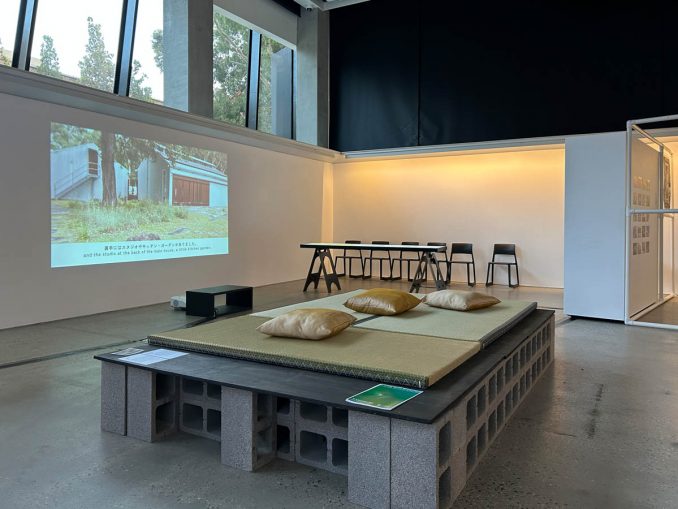
Utilising the digital media, the curators investigate the proposition of time and seasonality. Growth, motion, and climate are present in the films. Forest Edge Garden, which located next to Watagans National Park, designed by Jane Irwin Landscape Architecture, is an example of landscape project which matured and formed over time. Since its construction in 2014, this project gradually attracted a diverse range of native animals, including rock wallabies, snakes, echidnas, and lyrebirds, creating a harmonious co-habitation within the disturbed landscape.
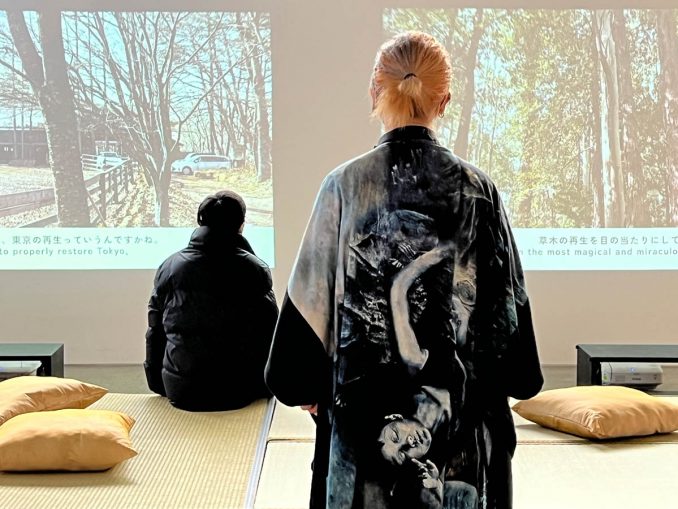
This exhibition experience is further enriched by the inclusion of audio-visual media, especially the presence of sound- an aspect rarely integrated into landscape architecture presentations. The auditory components bring a heightened immersive quality to the media, allowing visitors to hear the flowing of streams, the footsteps on timber deck, the sound of a horse chewing hay, and even the ethereal silence of landscapes. ‘Showing rather than telling’ approach, enabling open interpretation and personalised experiences of these landscapes.
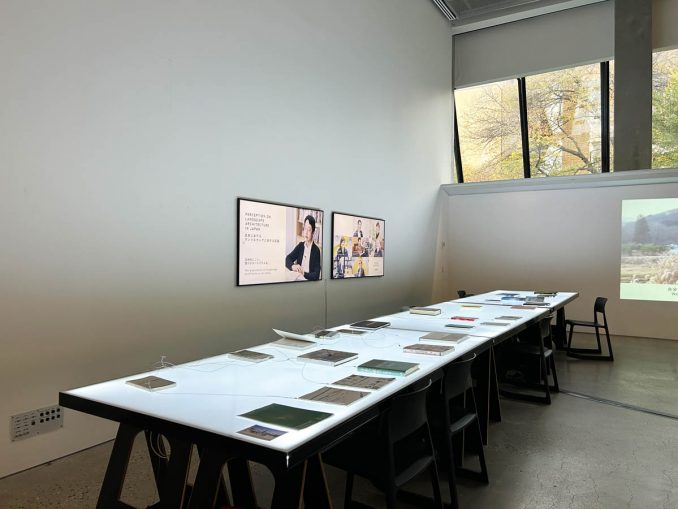
Landscape Architects as Change Makers further demonstrates the thinking and reflection of the heroes behind these landscape projects and how they perceive their practice and the landscape architecture industry. For example, Australian landscape architecture industry witnesses the rise of female leadership over the years while Japanese designers are facing a weak governance structure and persistent gender equity imbalance.
In the year of 2023, amidst the challenges of post-pandemic recalibration, climate change, social injustice, and rapid urbanisation, Landscape Architects as Change Makers sets a trajectory for landscape architecture that crosses the national boundaries. These design thinking and strategies are important in addressing the urgencies we’re facing.
As landscape architecture continues to evolve, there is a need to explore new ways of representing and disseminating design projects. The exhibition offers a fresh paradigm for the discipline and industry, showcasing how we can share positive contributions to our natural, social, economic, and cultural environment during time of flux through the use of digital media.
The exhibition is open at the Dulux Gallery of the Melbourne School of Design until 1st June. The full films and a digital scan of the exhibition will be available after the exhibition at https://www.laxchangemakers.com/. The exhibition will be travelling to Tokyo in early November, which will coincide with IFLA APR regional conference.
Exhibition Review | Landscape Architects as Change Makers
Projects featured:
Hoshinoya Karuizawa by studio on site
Nihonbashi Garden by Landscape Plus + Paddington Reservoir Gardens by JMD Design
Okutama Forest Therapy Trail by studio on site + Grampians Peaks Trail by McGregor Coxall
Queen’s Meadow Country House by Annex & Plantago + Forest Edges Garden by Jane Irwin Landscape Architecture
Prahran Square by ASPECT Studios
Image credit: Jillian Walliss, Heike Rahmann, and Saran Kim.
This review was written by Terren Shi, a recent graduate of landscape architecture.
Reference:
Melbourne School of Design. “Landscape Architects as Change Makers.” Accessed 25th May 2023. https://msd.unimelb.edu.au/virtual-collections/landscape-architects-as-change-makers
Landscape Architects as Change Makers. “Landscape Architects as Change Makers.” Accessed 25th May 2023. https://www.laxchangemakers.com/
